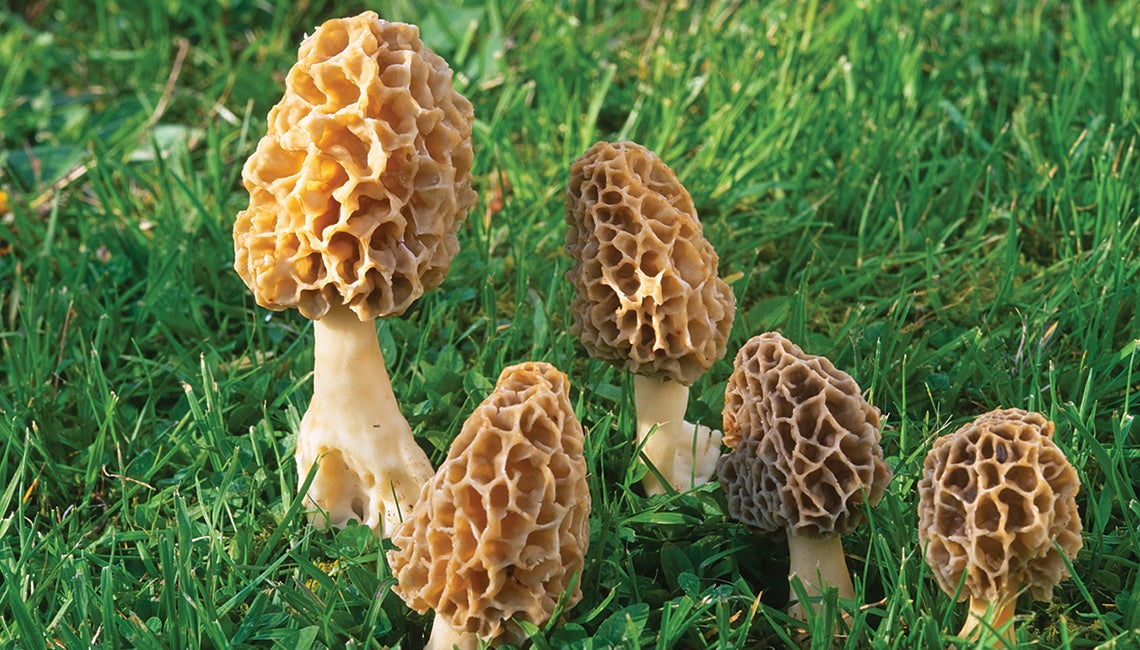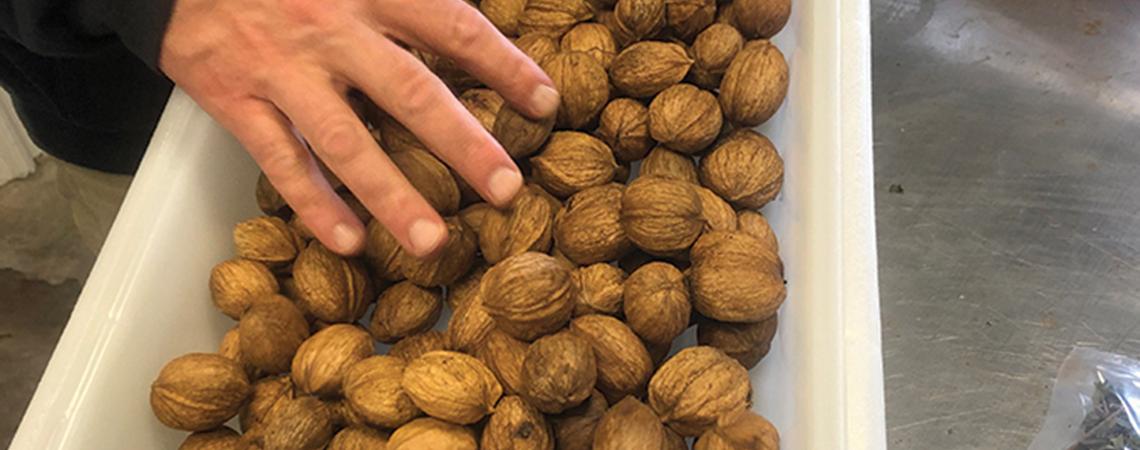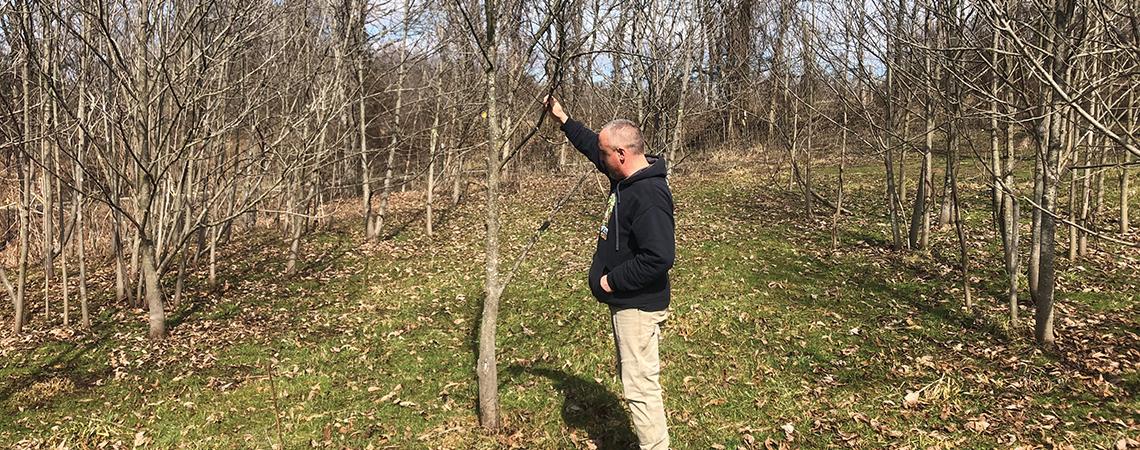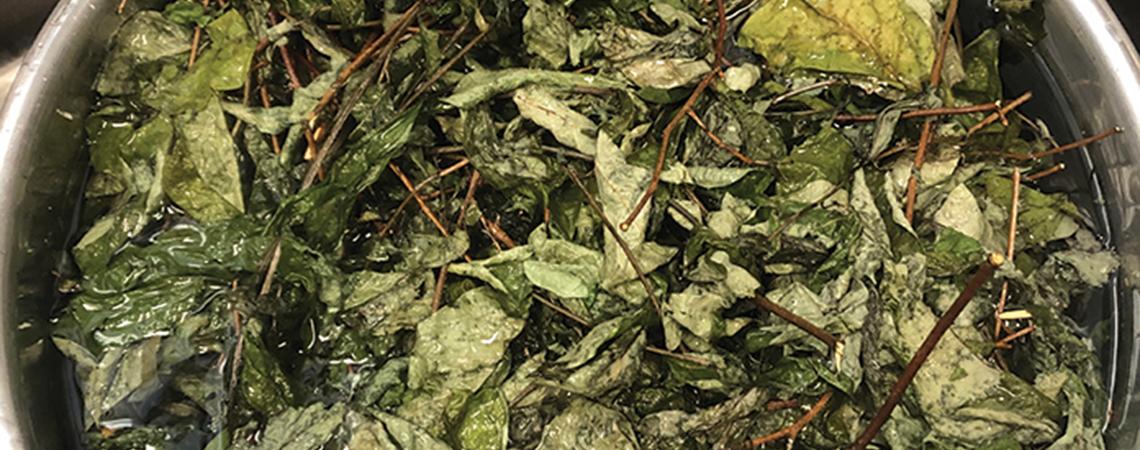After a long winter, the arrival of spring carpets Ohio with blankets of blossoms, festoons trees with brilliant buds, and sprinkles forest floors with spicebush splendor.
The season’s beauty seems even more welcome this year, after a snowy and cold pandemic winter. Many folks, however, may not be aware that so much of the splendor is edible.
Toss in a handful of redbud leaves to add garnish to a salad. Fry dandelion flowers into fritters. Make mashed “potatoes” out of Ohio’s only native tuber: the sunchoke (better known as the Jerusalem artichoke), or steep the leaves from spicebush into a refreshing summer tea. Morels, of course, are prized by mushroom-hunters who covet their earthy, exotic taste.
Chris Chmiel sorts homegrown hickory nuts on this Athens County farm.
The pandemic has made people take a closer look at the ground beneath them.
“The pandemic gave native gardening another shot in the arm,” says Chris Chmiel, owner of Integration Acres outside of Albany in Athens County. “It’s a safe activity: Go out and do some foraging while social distancing.”
Integration Acres is located on a wooded, rural, bucolic parcel of hills, where goats lazily graze and the scent of earthy black walnuts drifts through the air. The farm focuses on cultivating locally grown products like pawpaws and other foraged, forest-farmed products. Those include persimmon seeds and spicebush berries (Appalachian allspice). Integration Acres is one of the largest pawpaw processors globally, producing several tons a season.
Chmiel has been at the forefront of raising awareness of Ohio’s native edibles. Chmiel started the annual Pawpaw Festival in 1999 to celebrate Ohio’s state fruit at the height of its ripeness each September. In 2019, the festival attracted 10,000 people curious about Ohio’s native edibles, and though the pageantry was paused for 2020, plans are for the festival to resume this year, Sept. 17 through 19.
Ohio’s native edibles aren’t as well known as others, mostly owing to the quirks of plant genetic evolution. The native hickory nut, for example, has a beautiful, nutty taste on par with pecan — you could easily justify putting hickory nut pie on your Thanksgiving menu.
But hickory nuts, unlike pecans, are time-consuming to shell, even when done by machine, so the nuts have never caught on on a large scale, despite the taste. If you have the time to spare, then get your hands on some Ohio hickory nuts and start shelling; you’ll be rewarded.
Even the pawpaw, for all its versatility and fruity splendor, is tough to make commercially viable on a mass scale.
“They are super fragile and bruise eaily, so it’s hard to get them to the grocery store,” Chmiel says. In addition to their fragility, their window of ripeness is narrow — so that combination means most people haven’t heard of pawpaws and wouldn’t know what to do with them if they got some.
Chmiel says the secret to enjoying pawpaw is to eat them at the right time. If they aren’t ripe, they’ll taste horrible. “When they’re ripe, they’ll fall from the tree, and that’s when you have to get them,” Chmiel says. Eating them fresh is best (“It’s like eating tropical pudding,” Chmiel says), but if you have enough, you can freeze them year-round for smoothies, ice cream, and other desserts.
Tanner Filyaw is the sustainable forestry program director for Rural Action, an Athens County nonprofit that develops sustainability in the region’s forests, where conditions and culture have long made native edibles valuable. He says that just about any Ohioan with some natural habitat on their property can usually find something to cultivate and forage, even in Ohio’s glaciated north and west, where native edibles have mostly been cleared for farming over the years.
However, he says, the native plant life and biodiversity of Ohio’s Appalachian region have remained mostly intact, and that has created a veritable salad bowl in the hills of Athens, Gallia, Meigs, and other counties in the area where chickweed, wild greens, and violets beckon.
“Every property is different, but every property has at least some habitat,” Filyaw says. Much depends on “microclimates” unique to each property: a cool creek bed, a sunny slope, or a dark forest floor.
Upon a property owner’s request, Rural Action representatives will come out to a parcel and develop a management plan, matching the best habitats with the most suitable native elements. Many times, the property owners will already have foragable native plants on their property.
As a general rule, the north and east slopes of hillsides are where you find prized plants like ramps, morels, sunchokes, and medicinal herbs like ginseng. Pawpaws tend to favor shady stream corridors.
Ohio’s Appalachia is steeped in deep traditions surrounding medicinal and food folklore, so there is a receptive audience to Chmiel’s message. “The native-grown foods really bring people together,” Chmiel says.












